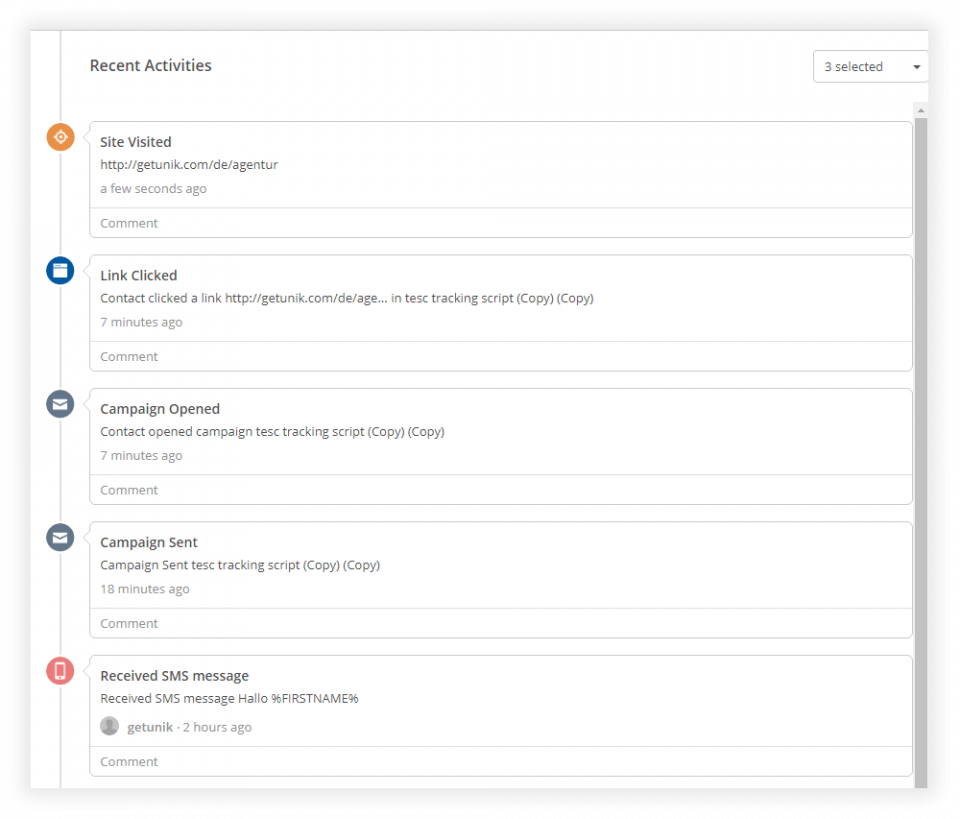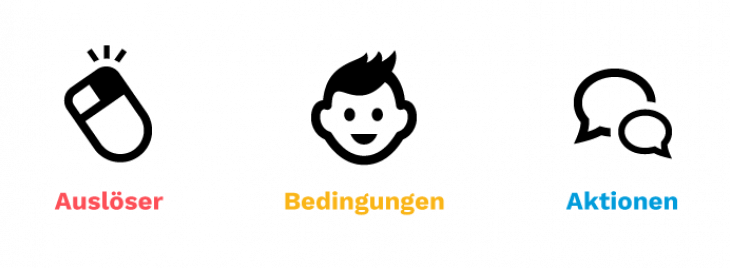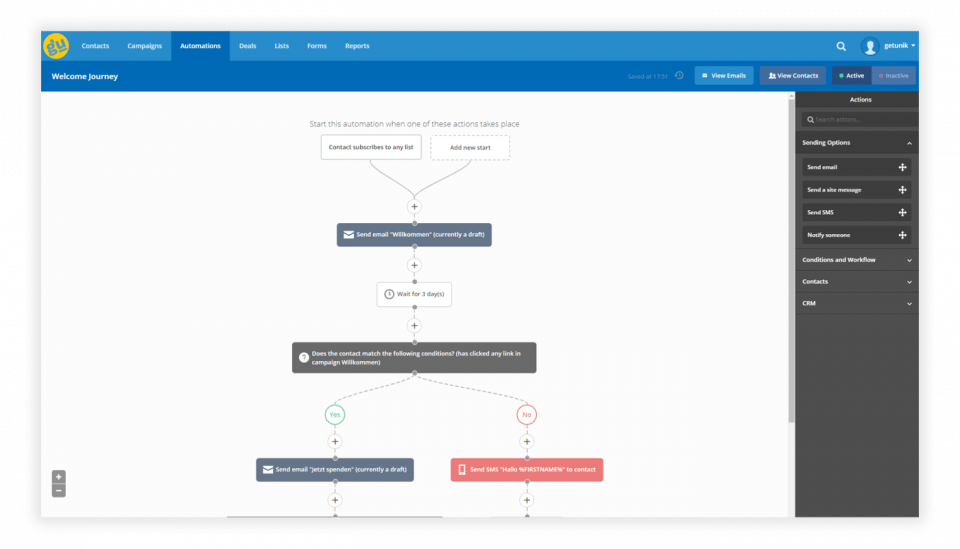Personalized, orchestrated, real time: This is what Marketing Automation can do for NGOs
Marketing Automation for NGOs: Omni-channel execution
Cross-Channel, Multi-Channel, Omni-Channel: For years fundraisers have been talking about orchestrating communication measures across all channels in order to inspire their donors and members with relevant content.
With Marketing Automation for NGOs, various processes and tasks of lead generation and donor development run automatically in the background and replace manual processes such as target group selection for newsletters, posting a Facebook post, or commissioning print mailings and telephone marketing. This saves you money, time and nerves in the long term.
Very few people have really managed it so far. An important reason for this is the technology.
“The functionalities of CRM systems are often limited for digital channels.”
On the one hand, CRM systems have been in use for many years, which serve the needs of classic business very well, but whose functionalities for the digital channels are limited. On the other hand, in recent years more and more additional systems have been put into operation to manage the new channels, such as e-mail marketing, social media monitoring, web tracking, push notifications or online payments.
“The solution is the use of integrated data and central control.”
In most cases, these are purchased solutions that perform well in their respective disciplines. However, they have often been put into operation independently of each other and are therefore hardly integrated with each other. Automated, cross-channel and orchestrated communication is therefore not possible. The solution is the use of integrated data and a central control. Fortunately, there are affordable solutions available today that enable marketing automation for NGOs and coordination of marketing activities across all channels. So-called marketing clouds serve as an extension to the CRM system and combine web tracking, e-mail marketing, SMS marketing and social media listening in one. The central management and measurement of all marketing activities enables a global overview of all interactions with donors.

E-mail, text messages, website visits: In the Activity Feed of the getunik Marketing Suite
all interactions are recorded and represent marketing automation
for NGOs.
–
Integrationen können verwendet werden, um zusätzliche Daten zu importieren, z.B. Informationen aus dem CRM-System über offline getätigte Zahlungen. Damit sind alle wichtigen Daten aus allen Kanälen in einem System verfügbar, was die Grundlage für eine orchestrierte Omni-Channel-Kommunikation bildet. Der sogenannte Workflow Builder basiert auf diesen Daten. Dank diesem können Sequenzen von Aktionen definiert werden, die das System automatisch ausführt

The Workflow Builder is typically based on three categories: trigger (e.g. “has opened e-mail”), conditions
(e.g. “belongs to target group x”) and actions (e.g. “a
Notify employee”).
–
Modern software offers the Workflow-Builder as a visual interface, which displays the processes as in a flow chart. This makes it easier to keep track and allows complex workflows to be set up.

The Workflow Builder of the getunik Marketing Suite clearly displays the
Marketing automation processes for NGOs.
–
Thanks to the combination of central data management and powerful workflow builder, complex cross-channel donor journeys can be automated. Although setting up such a journey is more complex than with simple one-shot campaigns, the ROI is significantly higher for two reasons:
- The campaign can run over several months and thus constantly brings new leads or donors.
- The individual steps are triggered by the donor. They are therefore a direct response to the person’s behaviour and are therefore much more relevant than classic campaigns based on the watering can principle.
It is time to not only talk and dream about Omni-Channel, but to finally put it into practice. We would be happy to accompany you from the conception to the implementation in our getunik Marketing Suite.
This way to part 1: Donor centricity – Focus on the people
This way to part 2: Big Data – Size doesn’t matter
